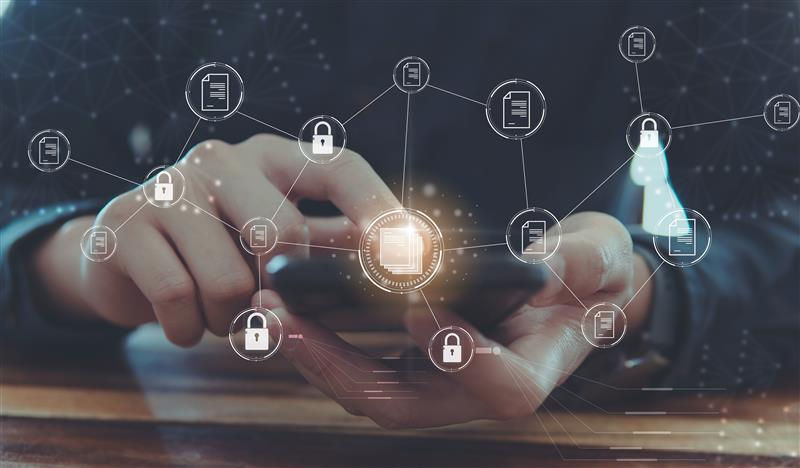Can You Trust That Voice? How Deepfakes Are Rewriting Cyber Risk
- CoopSys
- Aug 29
- 3 min read

Voices You Hear Might Not Be Real
Boston cybersecurity companies are raising the alarm about a new kind of fraud. Imagine receiving a phone call from your CEO instructing you to approve an urgent wire transfer. The voice sounds authentic, the tone familiar, and the urgency convincing. But what if that voice never belonged to your CEO at all? This is not a plotline from science fiction, it is a deepfake, and it is rapidly becoming one of the most disruptive forces in cybersecurity.
Deepfake technology is infiltrating everyday communication, from videoconferences to voicemail systems. Businesses can no longer assume that the person on the other end of the line is who they claim to be. This article unpacks how deepfakes are rewriting trust in professional interactions, the scale of financial and reputational damage they already cause, and the strategies available to protect organizations from this rising threat.
Why Boston Cybersecurity Companies Warn Against Blind Trust
The biggest danger of deepfakes lies in their ability to exploit trust. A recent survey showed that 50% of organizations reported encountering audio deepfake fraud and 49% experienced video deepfake scams in 2024 alone. That means nearly half of companies worldwide are already battling these attacks.
The financial impact is equally alarming. Businesses have reported an average loss of about $450,000 per incident, while some large enterprises have seen losses as high as $680,000. For small to mid-sized businesses, such a hit could destabilize operations entirely.
The frequency of incidents is growing at a staggering rate. Between 2022 and 2024, audio deepfake scams increased by 12% and video deepfakes rose by 20%. Voice deepfake fraud grew even faster, with a 680% jump in reported cases over the past year.
How Deepfakes Enter Business Workflows
Statistics only tell part of the story. Deepfakes are already driving some of the most expensive fraud cases of recent years.
In February 2024, global engineering firm Arup lost £20 million ($41 million) after staff members were deceived by fake executives during a videoconference. Attackers used avatars and cloned voices convincing enough to manipulate employees into transferring funds.
The world’s largest advertising group, WPP, narrowly avoided disaster when fraudsters cloned the CEO’s voice and attempted to replicate a Teams call to deceive another executive. Only the vigilance of employees prevented a major financial loss.
The U.S. is no exception. In the first quarter of 2025 alone, over 105,000 deepfake-related attacks were reported nationwide, resulting in damages exceeding $200 million. Even earlier, in 2020, a UAE bank was manipulated into transferring $53 million after a manager received what appeared to be a legitimate call from senior leadership.
These incidents demonstrate how deepfakes thrive on immediacy and familiarity. A cloned voice can now be generated from only a few seconds of public recordings, making it easy to impersonate leaders, celebrities, or anyone with a digital footprint.
Despite the severity of these risks, most organizations remain unprepared. Only 5% of businesses have implemented dedicated deepfake-prevention measures, while two-thirds of leaders doubt their employees can even recognize a deepfake attack. This preparedness gap leaves many organizations dangerously exposed.
Building a Defense Against Fake Voices with Insights from Boston Cybersecurity Companies
Technical safeguards are advancing quickly. AI-powered detection platforms, anomaly spotting algorithms, and biometric verification can help flag manipulated voices and videos. For instance, researchers have proposed challenge-response protocols and watermarking frameworks to authenticate live audio streams in real time. These measures make it harder for fraudsters to pass off synthetic voices as authentic.
Human awareness is equally vital. Employees should be trained to verify unexpected requests, especially those involving financial transactions or sensitive data, through secondary channels. Zero-trust authentication frameworks can further reduce reliance on voice alone, ensuring that no individual can bypass safeguards by sounding authoritative.
This is where CoopSys brings value. We combine AI-driven detection tools with biometric verification, layered security protocols, and continuous monitoring through our 24/7 Security Operations Center. Our training programs empower teams to spot the subtle red flags of deepfake fraud. By embedding these practices into daily operations, CoopSys helps organizations reinforce trust while maintaining the speed and convenience of digital communication.
Shaping a Safer Digital Future
Deepfake technology is no longer an emerging curiosity, it is an active cyber threat already costing businesses millions. With 50% of organizations reporting audio deepfake attacks and losses averaging nearly $500,000 per incident, no business can afford to overlook this risk.
Protecting against deepfakes means rethinking how organizations define trust. Voices and faces can no longer be accepted as proof of identity. Instead, systems of layered verification, smarter detection technology, and comprehensive employee training are required.
CoopSys provides this path forward. By combining cutting-edge security tools with proactive monitoring and people-first training, we deliver the confidence that your business can withstand even the most sophisticated forms of digital deception. The voices you hear may change, but with CoopSys, your trust in security does not.


